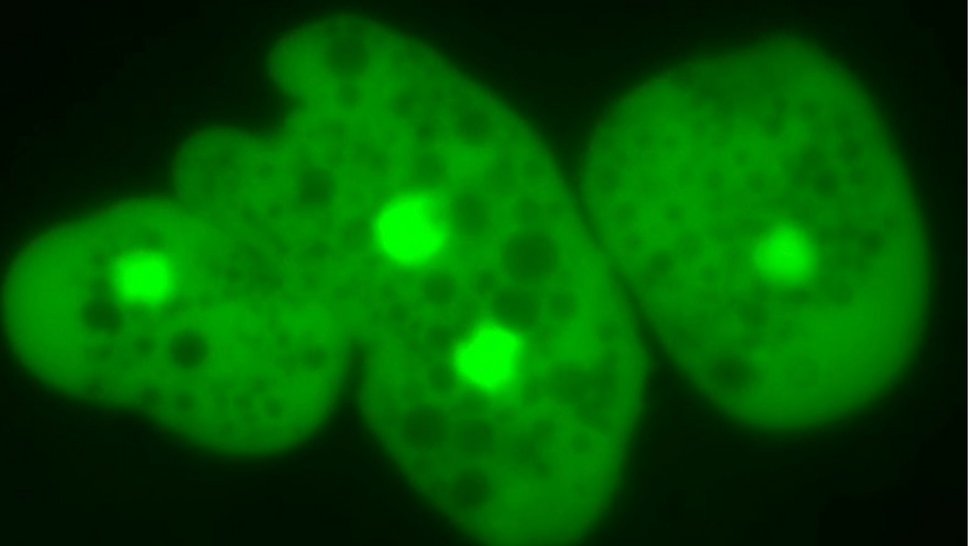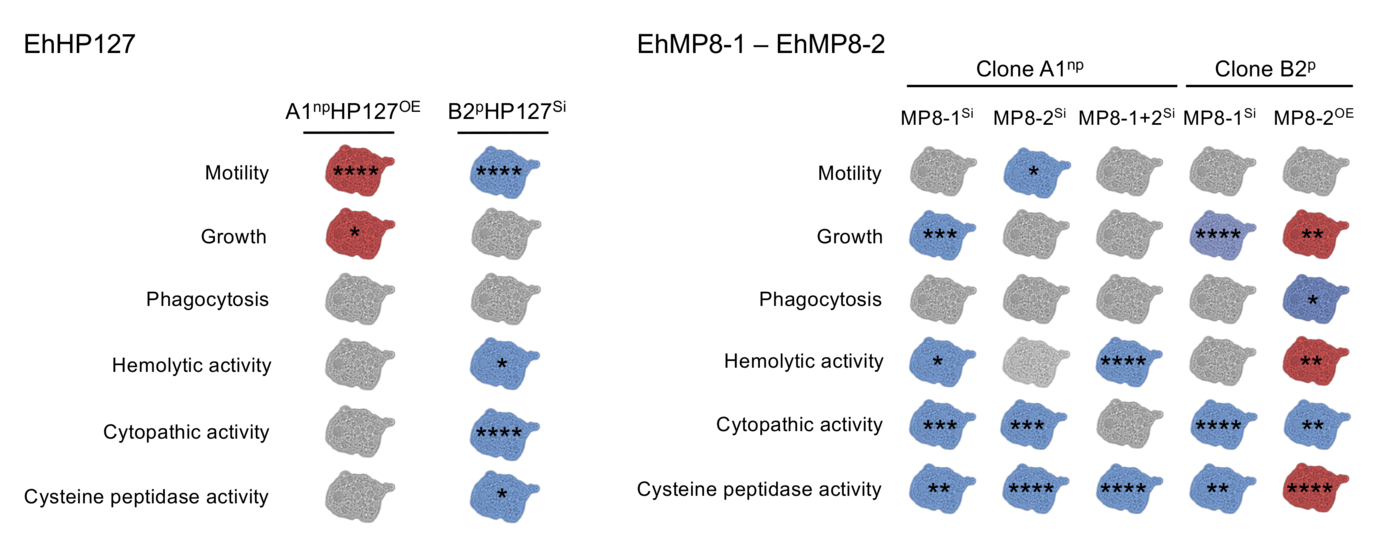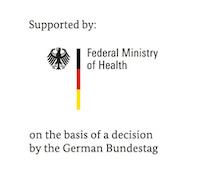Motility crucial for pathogenicity of parasitic amoebae
Researchers characterise two new pathogenicity factors of Entamoeba histolytica
An infection with the single-celled parasite Entamoeba histolytica is usually asymptomatic, but it can also lead to an intestinal infection (amoebic colitis) or a liver abscess. Researchers at the Bernhard Nocht Institute for Tropical Medicine (BNITM) set out to find out why. They focused on three molecules: the protein EhHP127 of unknown function and the proteolytic enzymes (metallopeptidases) EhMP8-1 and EhMP8-2. The results show that these molecules mediate the pathogenicity of amoebae through different mechanisms and complex networks. The study, funded by the German Research Foundation (DFG), was recently published in the journal PLOS Pathogens.

When a person is infected with amoebas of the species Entamoeba histolytica, in some cases they leave the infected person's intestine and migrate via the bloodstream to the liver, where they cause a liver abscess. Why and how this happens is still unknown. In earlier work, Prof. Dr. Iris Bruchhaus, head of the Research Group Host-Parasite Interaction, and her colleagues identified two new molecules as being important in this process: the protein EhHP127, which has an unknown function, and the proteolytic enzyme EhMP8-2, a metallopeptidase, influence the pathogenicity of Entamoeba histolytica (Meyer et al. PLOS Pathogens 2016 and Matthiesen et al. FASEB J 2019). But which pathways are involved? This is the question the research group addressed in the current study. For their experiments, they used non-pathogenic so-called A1 amoebae and pathogenic amoebae named B2.

Molecule EhHP127 important for amoebae motility and pathogenicity
"We knew almost nothing about the EhHP127 molecule as no similar molecule exists in the animal kingdom. We were able to show for the first time that this protein is important for the motility of amoebae," says Bruchhaus. The team concluded this from the following result: Increased production of EhHP127 enabled the A1 amoebae to cover a greater distance than amoebae with less EhHP127. Correspondingly, the B2 amoebae travelled less distance when EhHP127 was downregulated.
The scientists also found a major difference in cytopathic activity, which, in this case, is the extent to which the parasites damage a monolayer of liver cells. They found that when EhHP127 was downregulated in the B2 amoebae, the amoebae damaged the monolayer to a lesser extent, indicating a reduced cytopathic effect.
The research team knew from previous studies (Meyer et al. PLOS Pathogens 2016 and Matthiesen et al. FASEB J 2019) that upregulation of the EhHP127 protein in the previously non-pathogenic A1 amoebae increased their pathogenicity. Accordingly, the pathogenicity of B2 amoebae is reduced when the EhHP127 protein is downregulated. Taken together with the new results of the current study,
Bruchhaus concludes: "The pathogenicity of amoebae seems to be more closely related to motility than we assumed. For a long time, we thought that certain enzymes were necessary for the amoebae to dissolve cell-cell junctions and thus penetrate the tissue. Our results show that the mechanical movement of the amoebae is crucial in this process.”
Metallopeptidases EhMP8-1 and EhMP8-2 regulate different facets of pathogenicity
In order to characterise the two metallopeptidases, the researchers had to adopt a more complicated experimental set-up. They not only downregulated the peptidases individually in the A1 amoebae, but also downregulated them together: "This double silencing is a special feature of our study, as it is not easy to downregulate molecules in amoebae," explains Juliett Anders, first author of the publication. The reduced and increased production of EhMP8-1 and EhMP8-2 affected the transcription of many genes. Therefore, it was not surprising that many properties of the A1 and B2 amoebae changed in terms of pathogenicity: cell growth, cell-damaging (cytopathic) effects, the activity of protein-cleaving cysteine peptidases and the ability to destroy red blood cells (hemolytic activity).
"We knew that EhHP127 and EhMP8-2 direct amoebae pathogenicity in opposite directions. With the new results, we have now uncovered the different mechanisms behind this. While EhHP127 influences pathogenicity via motility, EhMP8-1 and EhMP8-2 act as higher-level regulators influencing complex networks. We hope to be able to transfer these results to other parasites," says biologist Bruchhaus.
In further experiments, she and her team will use an organoid model of intestinal cells to investigate how the molecules EhHP127 and EhMP8-2 influence the penetration of the amoebae into the intestine.

Original publication
Related articles
Funding
Contact person
Prof. Dr Iris Bruchhaus
Research Group Leader
Phone : +49 40 285380-472
Email : bruchhaus@bnitm.de
Dr Anna Hein
Public Relations
Phone : +49 40 285380-269
Email : presse@bnitm.de
Further information







